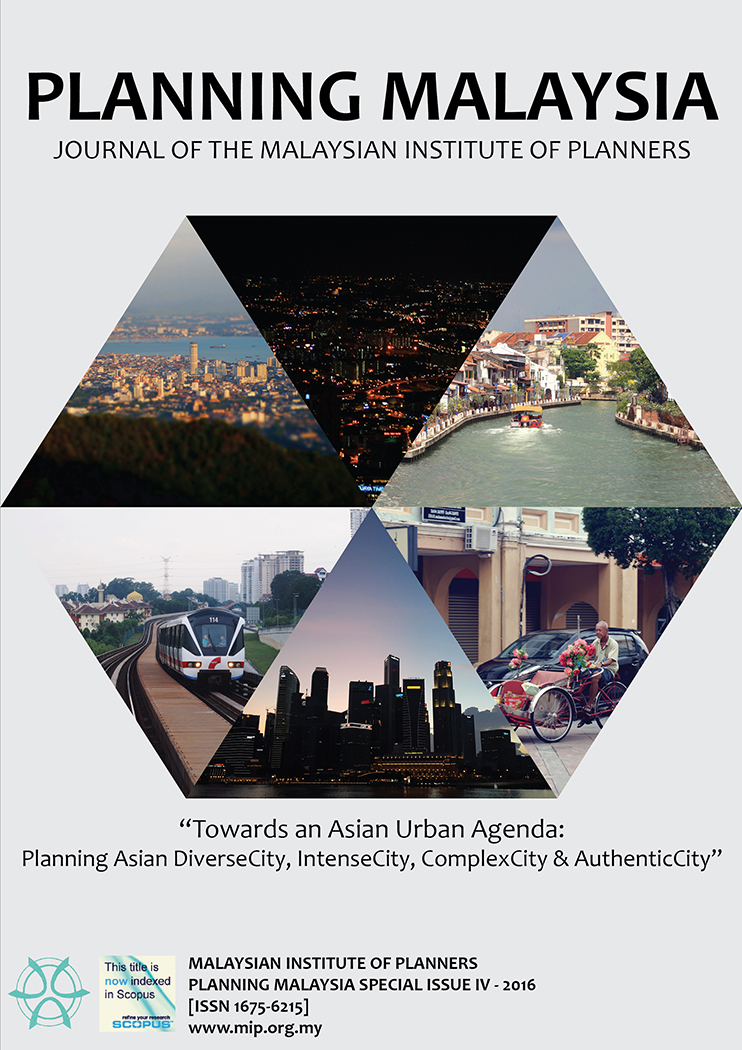A DISCRETE CHOICE MODEL FOR FIRM LOCATION DECISION
DOI:
https://doi.org/10.21837/pm.v14i4.164Keywords:
Discrete Choice Modeling, Central Business District, Firm Location DecisionAbstract
Where to locate? It is one of the most important question in locating a business in a city. In the city center, business or firms are functioning as a dominant attractor of employment and also employment locations which linked the land use and transportation system. The objective of this paper is to describe the location model of firms in Kuala Lumpur area. Two important determinants of location choice model in this study are the accessibility measures and the suitability analysis indicators. The model focuses on the statistical technique for analyzing discrete choice data by using econometric and Geographic Information System software. The findings in this paper show that agriculture, mining, electricity, gas and water, transport and finance firms' type are mostly located outside of Kuala Lumpur's Central Business District area. Meanwhile, manufacturing, construction and wholesale firms' type are located in the Central Business District area. The result of this study will highlight the use of discrete choice models in the analysis of firm location decisions which will be a foundation to facilitate town planners and decision makers to understand the firm location decisions in their region.Downloads
References
DiPasquale, D. & Wheaton, W.C. (1996). Urban Economics and Real Estate Markets,Prentice - Hall Incorporated: New Jersey.
Greene, W. (2008). Discrete Choice Modeling. New York , 2 , 7 – 78.
Grigolon, A.B., Kemperman, A.D. a. M. & Timmermans, H.J.P., (2012). Student’s vacation travel: A reference dependent model of airline fares preferences. Journal of Air Transport Management , 18(1), pp.38 - 42.
Leitham, S., R. W. Mcquaid, and J. D. Nelson. (2000). The influe nce of transport on industrial location choice: A stated preference experiment. Transportation Research Part A: Policy and Practice, 34(7):515 – 535
Li, P. P. (2007). Towards an integrated theory of multinational evolution: the evidence of Chinese multinatio nal enterprises as latecomers, Journal of International Management, vol. 13, pp. 296 – 318.
Parsons, G. (2004). Travel Cost Models. In P.Champ, K. Boyle, and T. Brown, eds. A Primer on Nonmarket Valuation. Boston: Kluwer Academic Publishers, pp. 269 - 330.
Train, K. (2003). Discrete Choice Methods with Simulation. Cambridge University Press, Cambridge
Downloads
Published
How to Cite
Issue
Section
License
Copyright & Creative Commons Licence
eISSN: 0128-0945 © Year. The Authors. Published for Malaysia Institute of Planners. This is an open-access article under the CC BY-NC-ND license.
The authors hold the copyright without restrictions and also retain publishing rights without restrictions.


